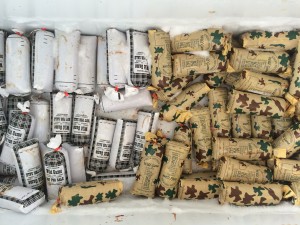Ashley Chaifetz, a PhD student studying public policy at UNC-Chapel Hill writes,
Government sharpshooters in Washington, DC shot 106 white-tailed deer in an effort to cull the population in Rock Creek Park to no more than 20 per square mile. The culled deer amounted to 3,300 pounds of hyper-local venison and was donated to homeless shelters and other emergency food providers in the area.
The National Park Service has the meat inspected and processed and then gives it to D.C. Central Kitchen. Using donated ingredients, the kitchen cooks and distributes 5,000 meals a day to community centers and shelters. “It would be really sad if the National Park Service had to kill all these deer and throw the meat away,” said Paul Day, a spokesman for D.C. Central Kitchen. In all, the National Park Service donated about 3,900 pounds of venison this year and last to D.C. Central Kitchen, which used the lean protein to make not only meatloaf and burgers but breakfast casseroles and chili.
Charities, like Farmers and Hunters Feeding the Hungry and Backyard Bow Pro, accept extra donated venison (as well as legally-hunted elk, antelope, and moose) from hunters. The organizations, in turn, process the carcass and have the meat inspected. While venison can carry Trichina, pathogenic E. coli and Salmonella, USDA’s Food Safety and Inspection Service requires that all meat slaughter plants conduct microbial tests for generic E. coli and Salmonella.
While venison might be a move away from the typical meat served in a homeless shelter, the hunted game aided in maintaining the park, feeding hungry families, and preventing food waste, all while ensuring the safety of the venison.
